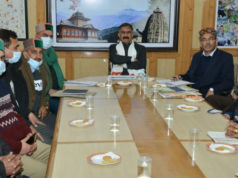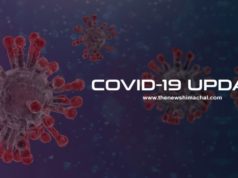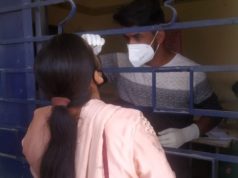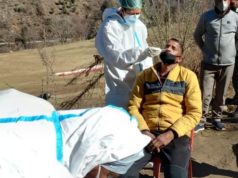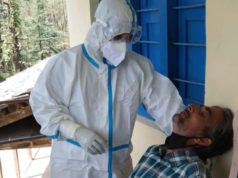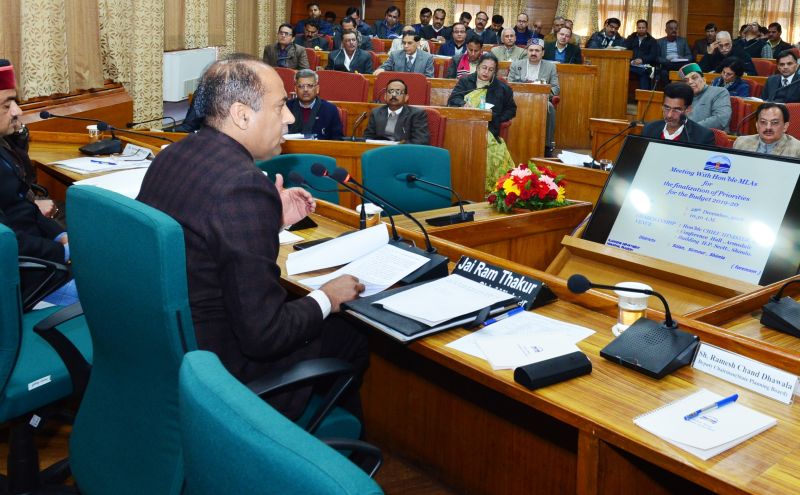BIS ranked Shimla Water Quality 6th best in Country
Shimla Jal Prabandhan Nigam Limited (SJPNL) has claimed of providing quality potable water for the people of Shimla Town especially during the Coronavirus outbreak.
Nigam claimed of adopting scientific methods to supply highest quality water to the people. Recently, in a survey by the Bureau of Indian Standards, Water Quality in Shimla was ranked 6th best in the country.
Shimla Jal Prabandhan Nigam disinfecting potable water by using Chlorine Gas Chlorinators and Bleaching Powder. A minimum concentration of Residual Chlorine is being maintained above 1ppm throughout the network as advised by the Department of Microbiology and Community Medicines IGMC, Shimla.
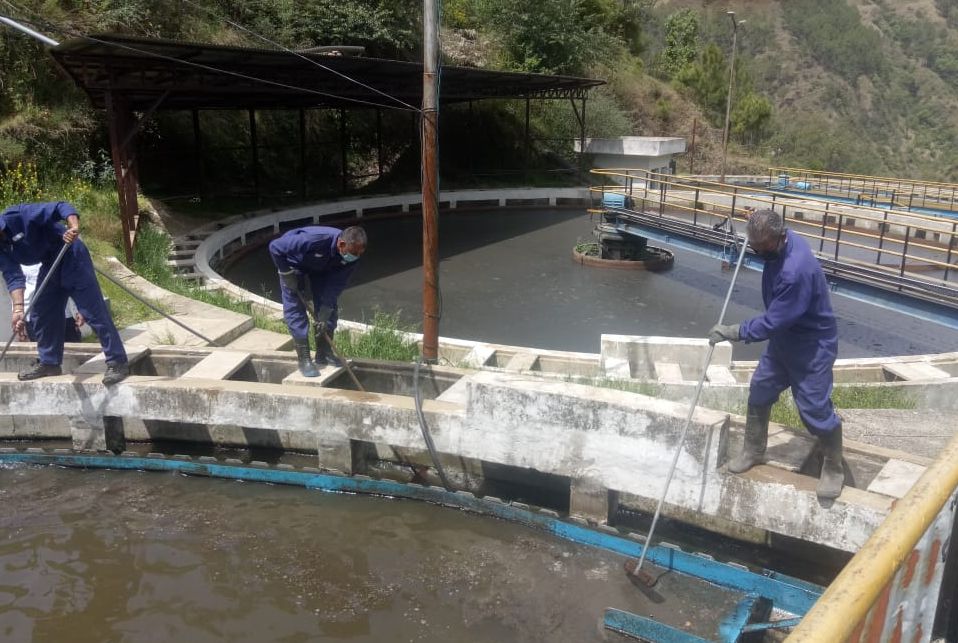
In order to remotely monitor the real-time performance of the pumping systems a web-based application has been developed.
All the 966 key nodes were mapped on the Distribution Monitoring Software and keymen were directed to measure and upload these values of concentration of Residual Chlorine on the software before supplying the water. If these values were less than 1ppm then firstly the chlorine concentration is maintained and the supply of water is allowed after contact period of one hour. This information is available to all the supervisory staff and officers on real-time basis to ensure that the advisory is meticulously followed. This software has been developed by the SJPNL locally and is first of its kind in the country. It is very effective in monitoring the supply timing as well as the Chlorine dosage.
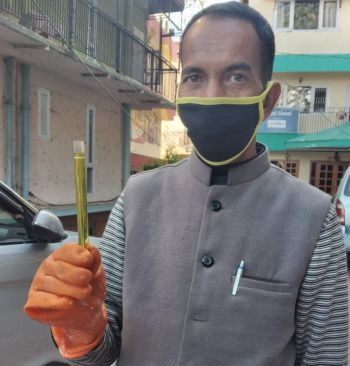
The Jal Nigam gets 20 water samples tested at Department of Microbiology and Community Medicines IGMC to monitor the water quality daily. Out of these, three samples are taken from fixed locations (Sanjauli Tank, Dhalli Tank and Kasumpati Tank) and rest 17 are collected randomly from different locations. This protocol of water testing is 30 times more than specified by the Ministry of Urban Development GoI.
Shimla has a daily water requirement of 46 to 48 million liters (MLD). SJPNL fulfils this demand by lifting water from six sources. The water is supplied daily in all areas for 1.5 to 2 hours through 43 sector storage tanks and about 225 km pipe network. As many as 75 keymen works from 2 AM till 11 PM to operate the 966 keys. About 225 workers are deputed day and night to operate and maintain the pumping stations and the distribution network.
All the Water Treatment Plants (WTPs) and storage tanks were cleaned and sanitized as per the guidelines of the Health Department and the SOP for tank cleaning and maintenance was being strictly followed.
In a water audit survey conducted through WAPCOS, about 25 percent leakage was observed in the water distribution network. Many of these leaking points were on busy roads or busy locations. So taking advantage of lockdown the SJPNL has started working on these locations and has rectified 47 locations so far, saving about 3 MLD water.
With a view to address various challenges regarding sewerage services, several precautionary measures have been taken. SJPNL Shimla is maintaining a sewer network of about 288 kms to collect and send the sewage in six Sewage Treatment Plants (STPs), located at Lalpani, Baragaon, Malyana, Dhalli, Snowdown, Barmu, Summerhill and North Disposal (Golcha). The sewage collected is being treated and disposed as per the CPCB guidelines. About 250 sewermen and other staff are working daily to maintain and operate the sewer network and the STPs.
Apart from this a survey work regarding the sewerage connectivity, grey water connectivity, shared sewer connection in each house of Shimla Town has been done during the lockdown period to eliminate all possible sources of contamination and flow of grey water in open drains.
In order to avoid dependence on manual labour, Nigam has decided to introduce Automation and Supervisory control and data acquisition (SCADA) system for operation and maintenance of all STP’s. Process has been initiated to install online effluent quality monitoring system in the all six STP’s.
Grievance Redressal Monitoring software has been developed to monitor the progress on grievance redressal. A helpline number 1916 has been made operational. A Special Task Force has been constituted in terms of provision contained under Section 41(2) of the National Disaster Management Act 2005 to redress all private and public complaints related to sewerage services. As many as 37 vulnerable points of the sewer leakage have been identified and the rectification of these identified points is also being done.
In this extra ordinary circumstance during lockdown all workers have been asked to maintain social distancing while working and supply of safety kits like masks, gloves, soaps sanitizers have been provided to them. All the field staff and vehicles have been issued curfew passes through the Administration and are fearlessly performing their duty with safety.




